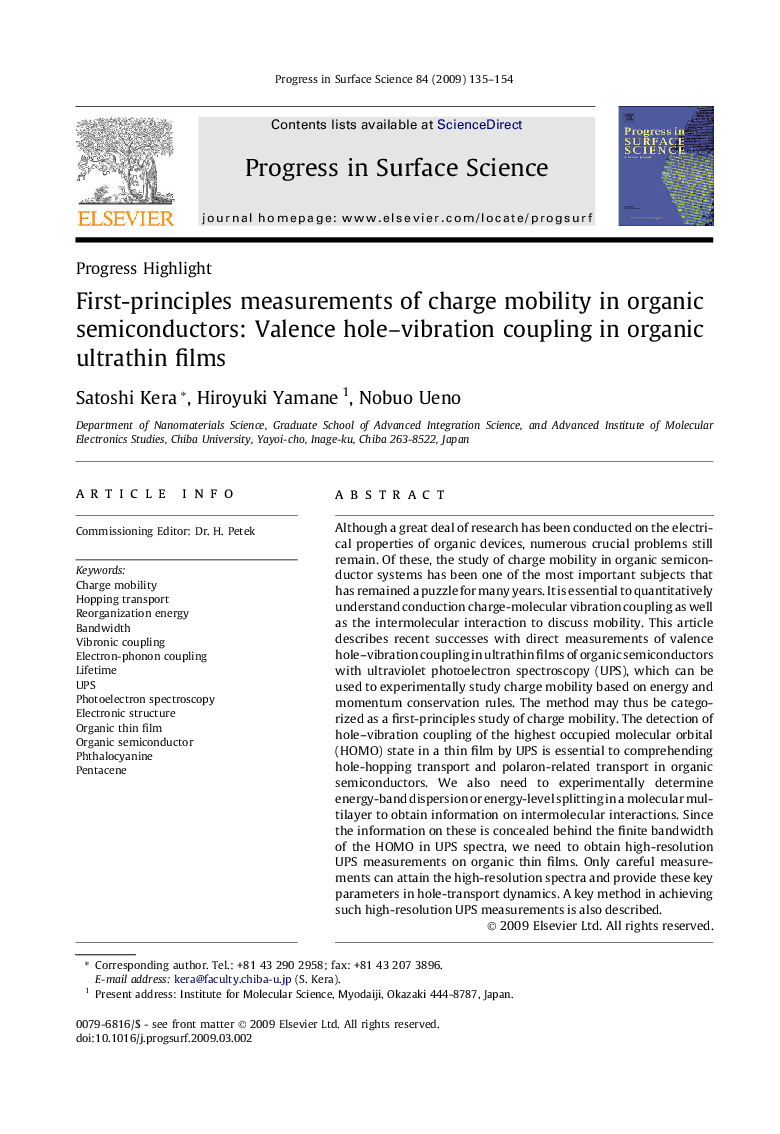| Article ID | Journal | Published Year | Pages | File Type |
|---|---|---|---|---|
| 5420040 | Progress in Surface Science | 2009 | 20 Pages |
Abstract
Although a great deal of research has been conducted on the electrical properties of organic devices, numerous crucial problems still remain. Of these, the study of charge mobility in organic semiconductor systems has been one of the most important subjects that has remained a puzzle for many years. It is essential to quantitatively understand conduction charge-molecular vibration coupling as well as the intermolecular interaction to discuss mobility. This article describes recent successes with direct measurements of valence hole-vibration coupling in ultrathin films of organic semiconductors with ultraviolet photoelectron spectroscopy (UPS), which can be used to experimentally study charge mobility based on energy and momentum conservation rules. The method may thus be categorized as a first-principles study of charge mobility. The detection of hole-vibration coupling of the highest occupied molecular orbital (HOMO) state in a thin film by UPS is essential to comprehending hole-hopping transport and polaron-related transport in organic semiconductors. We also need to experimentally determine energy-band dispersion or energy-level splitting in a molecular multilayer to obtain information on intermolecular interactions. Since the information on these is concealed behind the finite bandwidth of the HOMO in UPS spectra, we need to obtain high-resolution UPS measurements on organic thin films. Only careful measurements can attain the high-resolution spectra and provide these key parameters in hole-transport dynamics. A key method in achieving such high-resolution UPS measurements is also described.
Keywords
Related Topics
Physical Sciences and Engineering
Chemistry
Physical and Theoretical Chemistry
Authors
Satoshi Kera, Hiroyuki Yamane, Nobuo Ueno,
